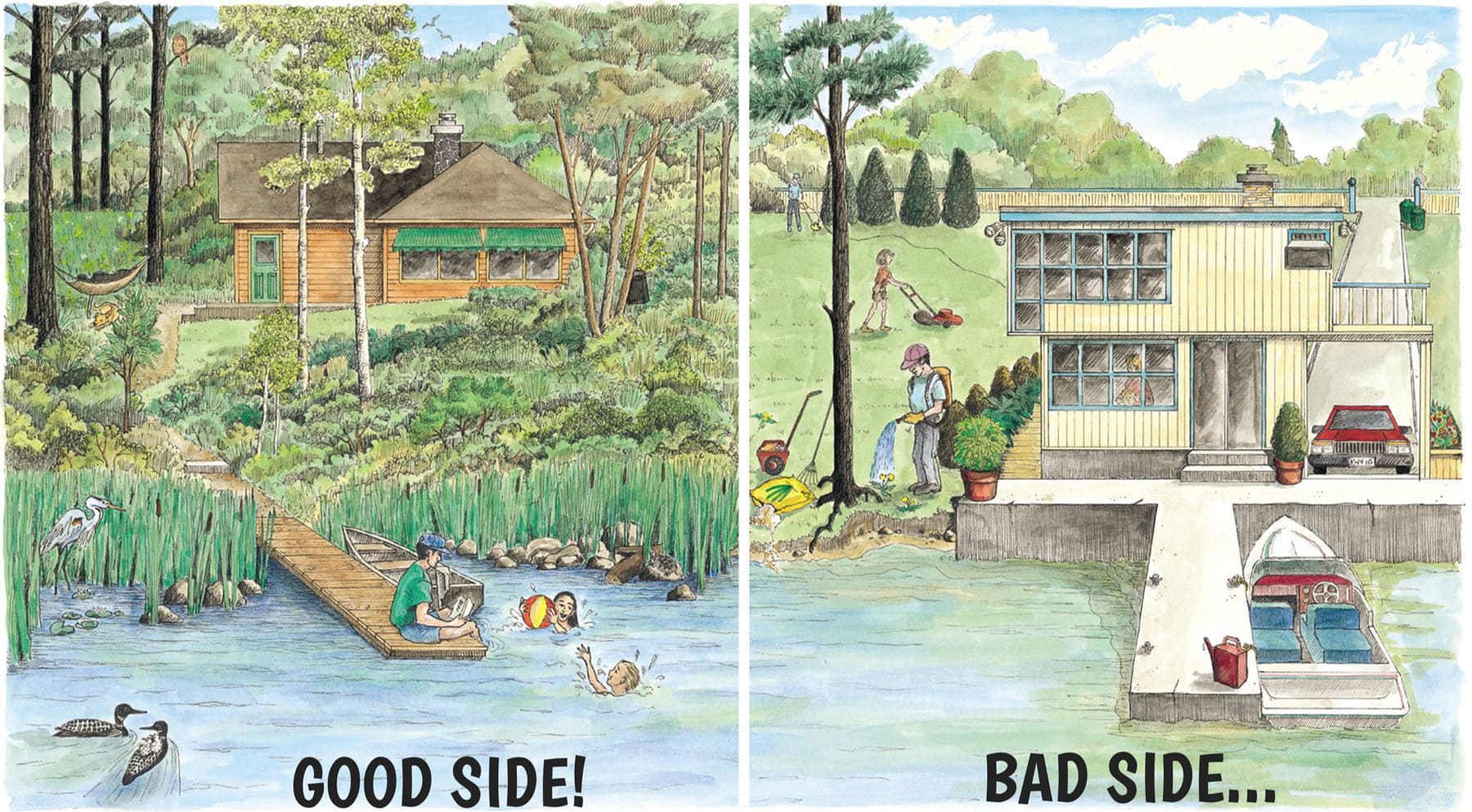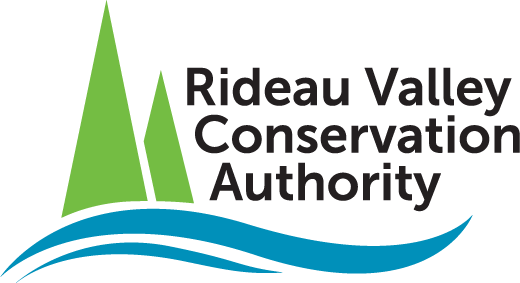Waterfront living can be so relaxing: always mowing the lawn, raking weeds out of your swimming area and stepping in goose poop...Wait, what?! That's not what owning a waterfront property is all about. But for too many people, that's the reality.
Cottages can become second homes, with all the annoying lawn work and maintenance that comes with them. But it doesn't have to be this way. With a few tweaks, you can get on the path to "the good side" and a more natural waterfront property. So: which side are you on? Scroll over the purple flags to learn how to turn your waterfront property a natural oasis.

Septic setback: The further a septic system is from the shore, the less likely it will pollute the water.
Setting your building back from the shore and blending in with the property promotes a more natural setting.
Narrow, gravelled footpaths are your best bet for beating back erosion, and for reducing runoff.
A natural shoreline makes for great wildlife habitat - and brings lots of curious creatures to your backyard paradise!
A small floating dock has minimal impact on the "ribbon of life" that occurs where shore meets water.
A well-maintained motor - whether it's electric or a four-stroke outboard - reduces water pollutants. Remember to watch your wake near the shoreline!
Less lawn work means more time for fun and relaxation!
Low-maintenance, native plants provide a great shoreline buffer, slowing down runoff and filtering out contaminants.
Trimmed trees and adjustable awnings keep your home or cottage nice and cool in the summer - without ruining the view.
Composting your plant-based kitchen scraps can improve your soil quality. (Just keep the meat and fish out of it, or you might get some unwanted visitors!)
Ripping out native plants and putting in a lawn means more yard work for you and more runoff into the water.
A bare shoreline is prone to erosion - and not very attractive!
Fertilizer spills and chemical run-off from lawn care can damage water quality and encourage algae blooms and excessive weed growth.
Raking and collecting clippings take nutrients out of the ecosystem.
Algae blooms are the result of nutrient overloading, which occurs when fertilizers end up in the water.
Poor fuel management can be deadly to the surrounding ecosystem if gas and other pollutants are spilled in or near the water.
A solid dock destroys wildlife habitat, alters currents and causes erosion for nearby shorelines.
A "hardened" shoreline eliminates the natural filter that keeps contaminants out of the water, and blocks wildlife from accessing the shore.
Ornamental shrubs require chemicals and extra work to stay alive, and if they're potted they can't even help fight erosion.
A paved lane funnels polluting run-off right into the water.
A lack of shade trees means you'll be running your air conditioner on overtime - paying more than you need to.
If your shoreline doesn't look like the one on the left, don't despair. The Rideau Valley Conservation Authority can help you turn your shoreline into the natural beauty it's meant to be.
Details about how the RVCA can help, visit the Shoreline Naturalization Program page


